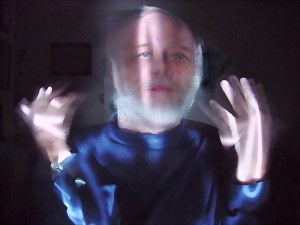A PROPOSAL:
(Irish Art History Section, Professional Development Service for Teachers, P.D.S.T., Ireland)
INTRODUCTION
It is my belief that the passageway and specially designed baffled 'roof-box' at Newgrange Ireland could determine the specific day of the Winter Solstice in real time. And if this is true, it means that this Neolithic science was thousands of years ahead of its time and more advanced, in this regard, than Greek or Roman astronomy. Today we now have the tools to test this hypothesis scientifically. Later in this article, I spell out ways that it could be tested.
When the Winter Solstice sunrise lit the passageway at Newgrange Ireland around the time of the solstice, it probably had religious and ritual significance. However, it is important to understand that the Newgrange structure was also a scientific instrument. It accurately 'captured' the Winter Solstice light using the well-crafted baffled roof-box that lit the carefully made passageway inside the structure and only did so when the sunrise was close to the day of the solstice. And when it did capture this sunlight, it magnified it.
It is not well understood today but determining the day of the Winter Solstice in real time was virtually impossible until recently. For almost a week there is only a slight difference in the sunrise position on the horizon, the length of the days only vary by seconds and atmospheric refraction can distort observation. So, at the time of the winter solstice, the sun barely moves (i.e., the sun's declination). In fact the word solstice comes from the Latin 'solstitium' meaning "point at which the sun seems to stand still" (dictionary.com). Please see the Afterword for more detail.
The Greeks and Romans could and did determine the day of the solstice after the fact by observing the position of the sun many days before and after the time of the solstice and then interpolating the actual day. However, they could not determine the actual day in real time.
Nevertheless, I believe the clever baffled roof-box and magnification of the light at Newgrange may have been enough to allow Neolithic experts to determine the exact day of the solstice in real time.
NOTE: Since the roof-box could capture sunrise light from about two days before the day of the solstice and two days after, some have interpreted this to mean that these Neolithic people were only interested in an approximate identification of the time of the solstice and not the exact day (see the following quote). I feel this is a mistake. It is my contention that each day before, during, and after the solstice could be identified individually. But cloudy days would have caused a problem. Yet with five days to work with, there was almost always at least one clear day that could be identified and used to calculate the actual day.
CURRENT OPINION DOES NOT AGREE
THAT THE DAY OF THE WINTER SOLSTICE
COULD BE DETERMINED IN REAL TIME
As I write this article there is agreement by experts that the time *around* the Winter Solstice could be indicated by Newgrange, but that's as much as they are willing to say.
The current opinion about the accuracy of Newgrange is expressed by T. P. Ray in his article about Newgrange. "Megalithic man was interested in marking the southern limits in declination of the sun and moon, albeit approximately. Such low accuracies suggest that ancient man's interest in these bodies may have been ritualistic rather than for the purpose of calendar construction."
Ray, T. P. The winter solstice phenomenon at Newgrange, Ireland: accident or design? School of Cosmic Physics, Dublin Institute for Advanced Studies.
But, as I have said, I believe that careful testing will show that Newgrange was quite accurate and could determine the day of the Winter Solstice in real time. I think that my hypothesis can be scientifically tested.
ACKNOWLEDGEMENT FROM THE MEDIA ABOUT THE PRECISION OF NEWGRANGE
Ireland, 3200 B.C.
On roughly four days every year, the Winter Solstice sun pokes through the top of this Stone Age monument and onto the floor of the interior chamber, filling the ancient temple with light for about 17 minutes. Built before Stonehenge, Newgrange was likely used to track the passing of the years with a precision ahead of its time. With an earthen mound and stone forming passageways and chambers inside Newgrange, the site likely also served as a passage tomb and ceremonial location as well as being a highly engineered clock.
Newcombup, Tim. Popular Mechanics, September 30, 2022.
https://www.popularmechanics.com/technology/infrastructure/a35867403/ancient-architecture/
The Winter Solstice Light December 2013.
https://commons.wikimedia.org/wiki/File:2013_Solstice_Newgrange.jpg
GENERAL IDEAS AND CONCERNS
FOR A STUDY OF THE ACCURACY
OF THE SOLSTICE INDICATORS AT NEWGRANGE:
http://www.ancient-wisdom.co.uk/irelandnewgrange.htm
https://spacemath.gsfc.nasa.gov/SED11/P8Newgrange.pdf
https://commons.wikimedia.org/wiki/File:Celtic_spiral.jpg
SPECIFIC WAYS TO TEST MY HYPOTHESES
(Irish Art History Section, Professional Development Service for Teachers, P.D.S.T., Ireland)
PUTTING A PROPOSAL AND STUDY TOGETHER
made by William Frederick Wakeman."
Quote from commons.wikimedia.org
http://www.archive.org/details/wakemanshandbook00wake
SCIENCE IN THE NEOLITHIC ERA
not with the prehistory of science,
but with science in prehistory.”
McClellan, James E. III, Dorn, Harold. Science and Technology in World History: An Introduction, Edition 2. JHU Press, June 2006, page 23.


A.jpg)






